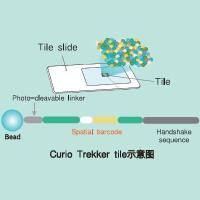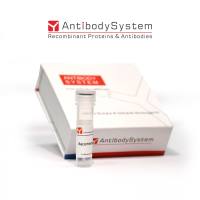Computational Large‐Scale Mapping of Protein‐Protein Interactions Using Structural Complexes
互联网
- Abstract
- Table of Contents
- Figures
- Literature Cited
Abstract
Although the identification of protein interactions by high?throughput methods progresses at a fast pace, ?interactome? datasets still suffer from high rates of false positives and low coverage. To map the interactome of any organism, this unit presents a computational framework to predict protein?protein or gene?gene interactions utilizing experimentally determined evidence of structural complexes, atomic details of binding interfaces and evolutionary conservation. Curr. Protoc. Protein Sci . 73:3.9.1?3.9.9. © 2013 by John Wiley & Sons, Inc.
Keywords: protein interaction; structural complex; binding interface; IBIS; Inferred Biomolecular Interactions Server
Table of Contents
- Introduction
- Basic Protocol 1: Computational Prediction of Protein Interactions on the Organism Scale Using IBIS
- Commentary
- Literature Cited
- Figures
- Tables
Materials
Figures
-

Figure 3.9.1 The biological rationale allowing the prediction of potential protein‐protein interactions from structural protein complexes with known binding sites. In the first step, protein complexes with known structures are collected. In the second step, a query protein sequence/structure is superimposed on or aligned with the homologous protein complexes. Assuming that an alignment covers a binding site of the known underlying protein structure, potential protein interaction partners are inferred from a homolog to a query protein. View Image -

Figure 3.9.2 Flowchart of the computational inference of protein interactions. View Image
Videos
Literature Cited
| Literature Cited | |
| Aloy, P. and Russell, R.B. 2002. Interrogating protein interaction networks through structural biology. Proc. Natl. Acad. Sci. U.S.A. 99:5896‐5901. | |
| Berman, H.M., Westbrook, J., Feng, Z., Gilliland, G., Bhat, T.N., Weissig, H., Shindyalov, I.N., and Bourne, P.E. 2000. The Protein Data Bank. Nucleic Acids Res 28:235‐242. | |
| Camacho, C., Coulouris, G., Avagyan, V., Ma, N., Papadopoulos, J., Bealer, K., and Madden, T.L. 2009. BLAST+: Architecture and applications. BMC Bioinformatics 10:421. | |
| Dayhoff, J.E., Shoemaker, B.A., Bryant, S.H., and Panchenko, A.R. 2010. Evolution of protein binding modes in homooligomers. J. Mol. Biol. 395:860‐870. | |
| Gibrat, J.F., Madej, T., and Bryant, S.H. 1996. Surprising similarities in structure comparison. Curr. Opin. Struct. Biol. 6:377‐385. | |
| Hosur, R., Xu, J., Bienkowska, J., and Berger, B. 2011. iWRAP: An interface threading approach with application to prediction of cancer‐related protein‐protein interactions. J. Mol. Biol. 405:1295‐1310. | |
| Huang, Y.J., Hang, D., Lu, L.J., Tong, L., Gerstein, M.B., and Montelione, G.T. 2008. Targeting the human cancer pathway protein interaction network by structural genomics. Mol. Cell Proteomics 7:2048‐2060. | |
| Kar, G., Gursoy, A., and Keskin, O. 2009. Human cancer protein‐protein interaction network: A structural perspective. PLoS Comput. Biol. 5:e1000601. | |
| Kim, P.M., Lu, L.J., Xia, Y., and Gerstein, M.B. 2006. Relating three‐dimensional structures to protein networks provides evolutionary insights. Science 314:1938‐1941. | |
| Krissinel, E. and Henrick, K. 2007. Inference of macromolecular assemblies from crystalline state. J. Mol. Biol. 372:774‐797. | |
| Kuzu, G., Keskin, O., Gursoy, A., and Nussinov, R. 2012. Constructing structural networks of signaling pathways on the proteome scale. Curr. Opin. Struct. Biol. 22:367‐377. | |
| Madej, T., Addess, K.J., Fong, J.H., Geer, L.Y., Geer, R.C., Lanczycki, C.J., Liu, C., Lu, S., Marchler‐Bauer, A., Panchenko, A.R., Chen, J., Thiessen, P.A., Wang, Y., Zhang, D., and Bryant, S.H. 2012. MMDB: 3D structures and macromolecular interactions. Nucleic Acids Res. 40:D461‐D464. | |
| Marchler‐Bauer, A., Lu, S., Anderson, J.B., Chitsaz, F., Derbyshire, M.K., DeWeese‐Scott, C., Fong, J.H., Geer, L.Y., Geer, R.C., Gonzales, N.R., Gwadz, M., Hurwitz, D.I., Jackson, J.D., Ke, Z., Lanczycki, C.J., Lu, F., Marchler, G.H., Mullokandov, M., Omelchenko, M.V., Robertson, C.L., Song, J.S., Thanki, N., Yamashita, R.A., Zhang, D., Zhang, N., Zheng, C., and Bryant, S.H. 2011. CDD: A Conserved Domain Database for the functional annotation of proteins. Nucleic Acids Res. 39:D225‐D229. | |
| Matthews, L.R., Vaglio, P., Reboul, J., Ge, H., Davis, B.P., Garrels, J., Vincent, S., and Vidal, M. 2001. Identification of potential interaction networks using sequence‐based searches for conserved protein‐protein interactions or “interologs.” Genome Res. 11:2120‐2126. | |
| Mika, S. and Rost, B. 2006. Protein‐protein interactions more conserved within species than across species. PLoS Comput. Biol. 2:e79. | |
| Nishi, H., Tyagi, M., Teng, S., Shoemaker, B.A., Hashimoto, K., Alexov, E., Wuchty, S., and Panchenko, A.R. 2013. Cancer missense mutations alter binding properties of proteins and their interaction networks. PLoS One 8:e66273. | |
| Pazos, F. and Sternberg, M.J. 2004. Automated prediction of protein function and detection of functional sites from structure. Proc. Natl. Acad. Sci. U.S.A. 101:14754‐14759. | |
| Pruitt, K.D., Tatusova, T., Brown, G.R., and Maglott, D.R. 2012. NCBI Reference Sequences (RefSeq): Current status, new features and genome annotation policy. Nucleic Acids Res. 40:D130‐D135. | |
| Reguly, T., Breitkreutz, A., Boucher, L., Breitkreutz, B.J., Hon, G.C., Myers, C.L., Parsons, A., Friesen, H., Oughtred, R., Tong, A., Stark, C., Ho, Y., Botstein, D., Andrews, B., Boone, C., Troyanskya, O.G., Ideker, T., Dolinski, K., Batada, N.N., and Tyers, M. 2006. Comprehensive curation and analysis of global interaction networks in Saccharomyces cerevisiae. J. Biol. 5:11. | |
| Shoemaker, B.A. and Panchenko, A.R. 2007. Deciphering protein‐protein interactions. Part II. Computational methods to predict protein and domain interaction partners. PLoS Comput. Biol. 3:e43. | |
| Shoemaker, B.A., Zhang, D., Thangudu, R.R., Tyagi, M., Fong, J.H., Marchler‐Bauer, A., Bryant, S.H., Madej, T., and Panchenko, A.R. 2010. Inferred Biomolecular Interaction Server―a web server to analyze and predict protein interacting partners and binding sites. Nucleic Acids Res. 38:D518‐D524. | |
| Shoemaker, B.A., Zhang, D., Tyagi, M., Thangudu, R.R., Fong, J.H., Marchler‐Bauer, A., Bryant, S.H., Madej, T., and Panchenko, A.R. 2012. IBIS (Inferred Biomolecular Interaction Server) reports, predicts and integrates multiple types of conserved interactions for proteins. Nucleic Acids Res. 40:D834‐D840. | |
| Slonim, N., Atwal, G.S., Tkacik, G., and Bialek, W. 2005. Information‐based clustering. Proc. Natl. Acad. Sci. U.S.A. 102:18297‐18302. | |
| Stajich, J.E. 2007. An introduction to BioPerl. Methods Mol. Biol. 406:535‐548. | |
| Stumpf, M.P., Thorne, T., de Silva, E., Stewart, R., An, H.J., Lappe, M., and Wiuf, C. 2008. Estimating the size of the human interactome. Proc. Natl. Acad. Sci. U.S.A. 105:6959‐6964. | |
| Teichmann, S.A., Murzin, A.G., and Chothia, C. 2001. Determination of protein function, evolution and interactions by structural genomics. Curr. Opin. Struct. Biol. 11:354‐363. | |
| Tuncbag, N., Gursoy, A., and Keskin, O. 2011a. Prediction of protein‐protein interactions: Unifying evolution and structure at protein interfaces. Phys. Biol. 8:035006. | |
| Tuncbag, N., Gursoy, A., Nussinov, R., and Keskin, O. 2011b. Predicting protein‐protein interactions on a proteome scale by matching evolutionary and structural similarities at interfaces using PRISM. Nat. Protoc. 6:1341‐1354. | |
| Tyagi, M., Thangudu, R.R., Zhang, D., Bryant, S.H., Madej, T., and Panchenko, A.R. 2012a. Homology inference of protein‐protein interactions via conserved binding sites. PloS One 7:e28896. | |
| Tyagi, M., Hashimoto, K., Shoemaker, B.A., Wuchty, S., and Panchenko, A.R. 2012b. Large‐scale mapping of human protein interactome using structural complexes. EMBO Rep. 13:266‐271. | |
| Walhout, A.J., Sordella, R., Lu, X., Hartley, J.L., Temple, G.F., Brasch, M.A., Thierry‐Mieg, N., and Vidal, M. 2000. Protein interaction mapping in C. elegans using proteins involved in vulval development. Science 287:116‐122. | |
| Yu, H., Luscombe, N.M., Lu, H.X., Zhu, X., Xia, Y., Han, J.D., Bertin, N., Chung, S., Vidal, M., and Gerstein, M. 2004. Annotation transfer between genomes: Protein‐protein interologs and protein‐DNA regulogs. Genome Res. 14:1107‐1118. |









